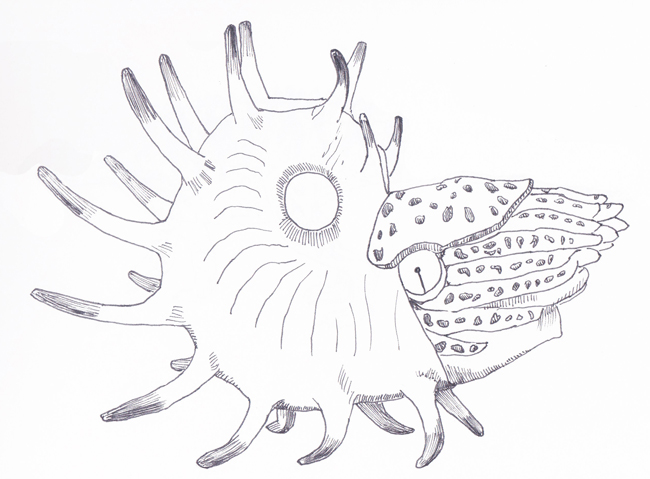Can Molluscs help Solve the Riddle of a Mass Extinction?
Popular culture has covered the mass extinction event that marked the end of the Cretaceous period and saw the demise of the dinosaurs, pterosaurs, marine reptiles, ammonites and a host of other species. However, it appears that extinction events have occurred at regular intervals throughout pre-history. When they happen, they provide opportunities for other groups of animals to evolve and dominate.
Mass Extinctions
This can allow whole new clades to develop, such as the ancestors of the dinosaurs which took advantage of the lack of competition to establish themselves.
To read an article on how new discoveries at the famous Ghost Ranch site in the USA is helping our understanding of the evolution of dinosaurs, click below:
New Ghost Ranch Discoveries cast light on Dinosaur Ancestors.
One of the biggest mass extinctions occurred around 250 mya and marks the end of the Permian epoch. Scientists remain divided over the cause of the Permian mass extinction; an event that wiped out 95% of life on Earth. Some scientists believe in the “impact theory”, like the end-Cretaceous extinction event which was caused by the impact of an extra-terrestrial body such as a meteor, comet or asteroid. Certainly, there is some evidence for a huge impact at around this time.
Papers published provide evidence of a 300 kilometre wide crater in what was the super-continent of Gondwanaland (southern continents), this crater is believed to be 50% bigger than the crater made at the end of the Cretaceous by the Chicxulab impact.
Snails and Oysters
Other scientists claim that the Permian mass extinction was a more gradual event – the “slow death syndrome”. This theory is backed up by recently published research from a joint US and Canadian team. This team studied the fossils of marine molluscs from sediments located as far apart as Thailand, China, Greece and the USA. Molluscs are soft tissued invertebrates, usually with a protective outer shell. Snails, oysters, mussels and clams are molluscs. In a 4-year project the team reviewed the density and diversity of mollusc fossils from 258 mya to approximately 250 mya. They noted that the number of mollusc fossils increased as the Permian came to an end.
Molluscs are known to adapt better to worsening environmental conditions than other creatures, so could the increase in mollusc follows indicate an increase in shellfish populations due to a slow, gradual decline in the environment?
A Palaeozoic Nautiloid (Cooperoceras)

The illustration of the Palaeozoic nautiloid Cooperoceras (C. texanum). The artwork was commissioned by Everything Dinosaur for use in the company’s Cooperoceras fact sheet. The Palaeozoic was dominated by strange invertebrates. Picture credit: Everything Dinosaur
Picture credit: Everything Dinosaur
To view a replica of Cooperoceras (whilst stocks last) and other Palaeozoic creatures: CollectA Prehistoric Life Figures.
The End of the Palaeozoic
The debate will no doubt continue. The mass extinction that marked the end of the Palaeozoic era may have been caused by a combination of factors. The climate during the Permian was very harsh, with very cold, dry seasons, followed by hot, dry ones, punctuated by monsoon rains. During this time there was a lot of volcanic activity. The formation of the giant super-continent Pangaea would have led to a loss of shallow sea habitats and the Panthalassa ocean currents (otherwise known as the Panthalassic ocean); from the Greek meaning “all the seas”, would have been altered and disrupted. This may have depleted the seas of oxygen and led to stagnation conditions which together with the other factor of a meteorite impact could have resulted in the mass extinction.






Leave A Comment